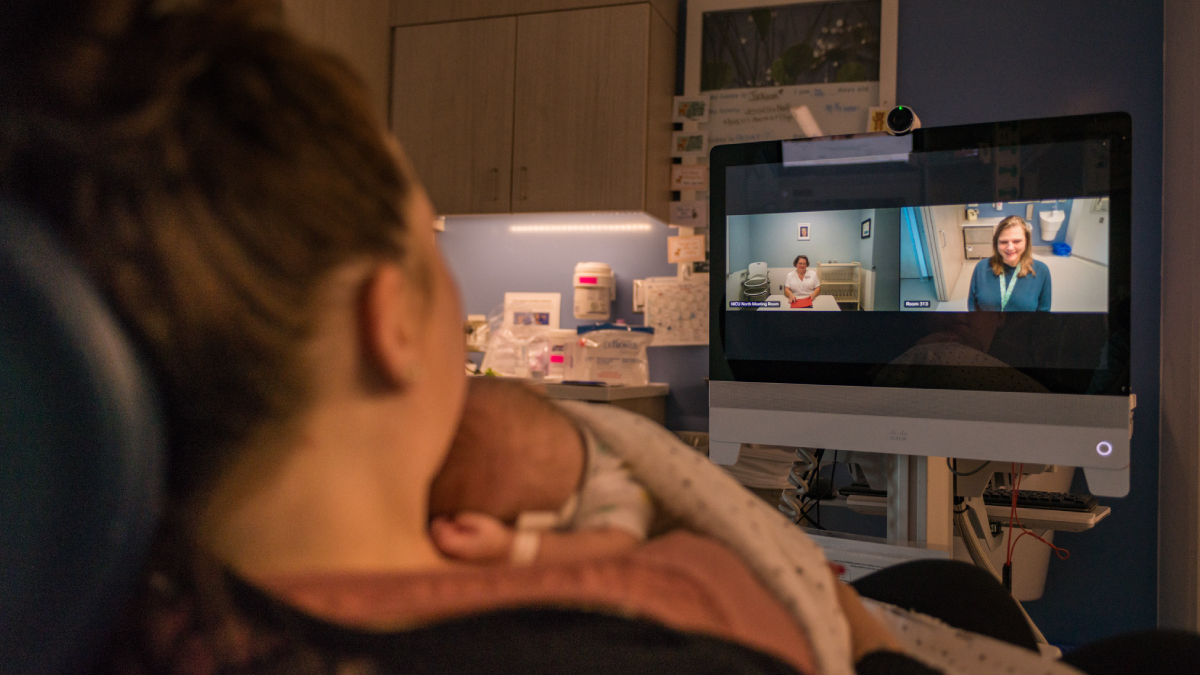OTTAWA, Canada - June 9, 2003 - Hospitals and healthcare organizations across Canada are turning to advanced Internet Protocol-based (IP) networking technology to improve organizational efficiency, reduce costs and enhance patient care, according to Cisco Systems.
"Our healthcare system is under tremendous pressure to improve the level of care it provides, while improving efficiency of delivery. By integrating voice, video and data onto a single IP network, healthcare institutions can provide the foundation for a wealth of new clinical and business applications, while managing costs at the same time," said Brent Rebus, vice-president of enterprise operations at Cisco Systems Canada. "Cisco provides the full breadth and depth of IP communications solutions that is empowering healthcare innovators from coast-to-coast to do more with less."
An increasing number of Canadian healthcare organization are utilizing highly secure, intelligent IP networks to facilitate voice and video services. A number are also running sophisticated, bandwidth-intense healthcare applications such as Picture Archiving and Communication Systems (PACS) and Electronic Patient Records (EPR) over an integrated network infrastructure.
Early adopters such as the Chatham-Kent Health Alliance (CKHA) - who installed a Cisco IP Communications system in 2002 - are already reaping tremendous benefits. "A huge component of the quality of care we deliver to patients is based on access to information. Our Cisco IP Communications network provides a sound platform to allow us to expedite patient information to care providers more quickly and efficiently," points out Jerome Quenneville, vice-president, finance and corporate services for CKHA. "IP communications holds such great potential for the healthcare industry because it allows us to proactively control costs, while delivering improved healthcare technology and services."
Merging voice and data
IP telephony is emerging as a significant trend in the Canadian healthcare industry. The technology allows organizations to send a telephone call over the same network that carries data, whether it is a local area network (LAN), a corporate intranet, a wide-area network (WAN) or even the public Internet.Bloorview MacMillan Children's Centre recently switched to IP telephony to future proof its communications and reduce costs. By converting 500 phones at one of its two sites to IP telephony, the Toronto-based hospital anticipates it will save more than $65,000 a year in operational costs. This figure will grow dramatically during an upcoming renovation as savings from "adds, moves and changes" of phones increase significantly.
"IP telephony is helping us manage our costs and provide innovative new services," said Linda Hatton, director of information services. "Integrating voice, video and data onto a single IP network will provide flexibility and mobility benefits that simply weren't possible before."
For instance, Bloorview MacMillan is planning to offer mobile voice and data connectivity to its community-based workers. By using a combination of virtual private network (VPN) and Cisco SoftPhone technology, the hospital will be able deliver anytime, anywhere connectivity to its mobile workers via their laptop computers.
"This is the type of innovation simply wouldn't have been possible without our Cisco IP Communications system," noted Hatton.
And Bloorview MacMillan isn't alone. Other Canadian healthcare institutions using Cisco IP telephony include the BC Cancer Agency (Victoria and Vancouver, British Columbia), CKHA (Chatham, Ontario), Sudbury & District Health Unit (Sudbury, Ontario), and Northern Lights Regional Health (Fort McMurray, Alberta).
Videoconferencing delivers real benefits
Driving video traffic across IP networks is also helping Canadian healthcare organizations manage costs and improve care.VideoCare, the Southwestern Ontario Telehealth Network (SWOT-N), uses an IP network to link 43 hospitals and healthcare providers via videoconferencing. Led by the London Health Sciences Centre and St. Joseph's Health Care in London, Ontario, the VideoCare network was designed to both sustain and extend existing and proposed clinical programs across the entire southwestern Ontario region. It also supports primary care physicians, specialists and their rural colleagues through real-time tele-consultation, tele-education and administrative opportunities.
By delivering healthcare and healthcare-related services - including tele-learning, tele-radiology, tele-consultation and administrative video-conferencing - VideoCare is helping improve the level of healthcare provided to patients in rural communities across southwestern Ontario.
"There are many difficulties associated with delivering healthcare to a large rural area in Canada. For patients, travel times to a health facility, especially in the winter, can make round-the-clock access to healthcare extremely difficult. Similarly, we don't want our healthcare professionals spending their valuable time behind a wheel, instead of working with patients," said Neil MacLean, project manager, VideoCare, SWOT-N. "By taking full advantage of IP videoconferencing, our VideoCare initiative is having a profound impact, for patients and healthcare professionals alike. Already we have eight clinical programs running over our network - and the potential for new and improved programs is almost limitless."
Hospitals are also utilizing their intelligent network infrastructure to cost-effectively deliver bedside video to patients via IP videoconferencing. For instance, Bloorview MacMillan will soon launch a bedside video program for its long-term patients designed to keep the children in closer contact with family, friends and even classrooms.
Powering advances in digital imaging and electronic patient records
Sophisticated healthcare applications - such as digital imaging and EPR - are also being enhanced by network convergence. As both applications are bandwidth intensive, latency sensitive and highly secure, they traditionally required separate, dedicated networks. However, modern IP-based communications technology is enabling these services to run over a single, intelligent network infrastructure, significantly reducing costs and delivering a more robust, reliable and secure service in the process.By running PACS over its IP network The Credit Valley Hospital, which is located in Mississauga, Ontario, has helped streamline operations, remove duplication and reduce inefficiencies.
"Since transitioning to a fully integrated network environment in September 2001, our Picture Archiving and Communication System has not only been less costly to operate, it has actually improved performance," said Jamie Bowie, director of information services at The Credit Valley Hospital. "The network speed has improved between 45 and 110 per cent and the unified network is easier to manage. Ultimately this creates a win-win situation for diagnostic imaging and the hospital IT department."
Integrating PACS onto its Cisco AVVID (Architecture for Voice, Video and Integrated Data) infrastructure is helping the hospital in a variety of ways, including: reducing the cost of managing multiple standalone medical-imaging solutions; controlling rising operational and supply costs; providing better accuracy and security when passing data between departments; and helping doctors form stronger customer relationships with patients and referring physicians by providing access to data more quickly.
Toronto-based University Health Network (UHN) - which is comprised of Toronto General Hospital, Toronto Western Hospital and Princess Margaret Hospital - is running its ambitious EPR initiative over its Cisco AVVID network. With the goal of moving to a complete and fully integrated electronic health record system by 2005, UHN recently upgraded its infrastructure with redundant core switches and fiber connections to further enhance network services to over 5,000 workstations.
"By implementing integrated processes and technical solutions our hospitals will achieve enormous patient care and operational benefits. Our electronic patient record program is allowing us to better support the provision of patient care and realize efficiencies," said Cara Flemming, director of Information Technology Operations at UHN. "We also anticipate savings of approximately $5-million over the next three years through streamlined operational efficiencies and reduced network maintenance costs. To support this level of innovation and integration, we have developed a state-of-the-art, reliable network infrastructure."
About Cisco Systems
Cisco Systems (NASDAQ: CSCO) is the worldwide leader in networking for the Internet. Cisco news and information are available at www.cisco.com.About Cisco Systems Canada
Cisco Systems Canada Co. has offices across Canada dedicated to customer support, sales, and service. In addition, Cisco Systems has a significant research and development centre in Ottawa, Ontario.Media Contact:
Gareth Pettigrew
Cisco Systems Canada (Strategic/Ampersand)
416-961-5595 ext. 428
gareth@stratamp.co
Investor Relations Contact
Roberta DeTata
Cisco Systems
408-527-6388
rdetata@cisco.com





